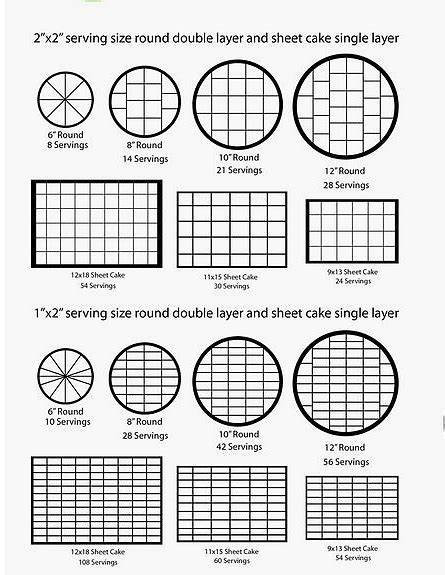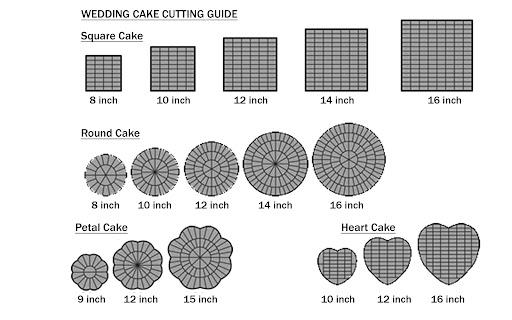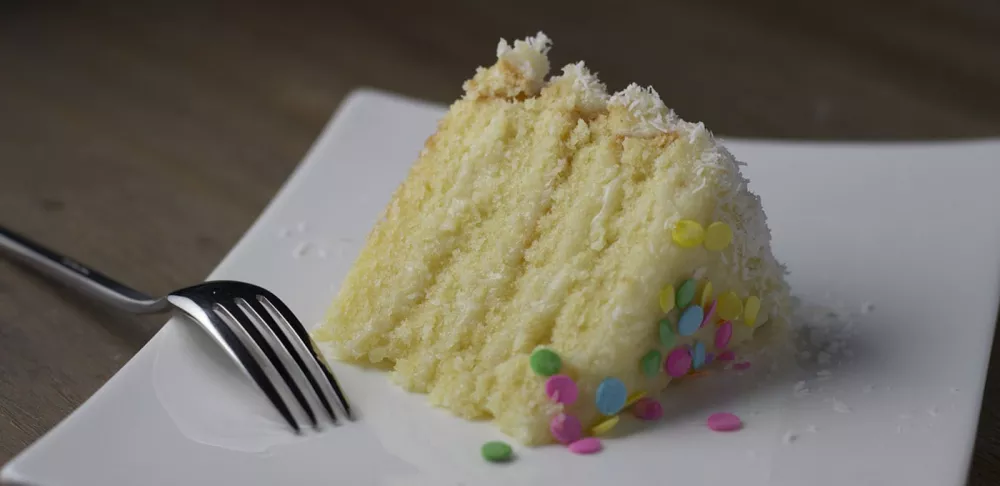Layer cakes are generally celebration cakes, so unless you’re a pastry chef or otherwise work in a bakery, you might not actually be in the habit of cutting cake more than once or twice a year. It follows, then, that without regular practice and consistent technique, you might not always get the best outcome in terms of producing neat, even slices, or the correct number of pieces to feed the crowd at hand.
Despite being the most popular method, cutting cake into wedges by eyeballing the radius of a round cake isn’t necessarily the best way to approach a layer cake situation, especially if you’re dealing with a cake of more than six or eight inches in diameter.
With wedding and graduation season on the horizon, ICE Pastry & Baking Arts Chef-Instructor Kathryn Gordon takes us through some best cake-cutting practices so you can cut celebration-worthy slices with confidence, no matter the size or style of cake.
“You need to make sure, whether it’s a smaller, party-sized serving or a bigger, dessert-sized serving, that there are enough slices to go around,” Chef Kathryn says.
Chef Kathryn's advice applies for casual cakes made at home or cakes made for a professional catering job. A pastry chef’s goal is also to produce slices that retain their textural integrity and look neat and presentable, but you don’t need to be a professional pastry chef to adopt the same mindset for cutting cake.
Related: All About Cake Math
The size or shape of the slices might depend on the size or style of the cake.
“I also consider to some extent how rich a cake is,” Chef Kathryn says. “For example, generally people will eat a smaller slice of a ganache, praline fudge and nut cake than a strawberry and cream sponge.”
No matter the style, though, having the right tool and the right approach to cutting are both key to the optimal outcome of ample, beautiful cake slices.

The Right Tool for the Job
As with any culinary undertaking, using the appropriate tool for the job at hand is an important habit for both professionals and amateurs. While layer cakes are generally soft in texture, that doesn’t mean you should disrespect them with a dull knife, or with the side of a wedge-shaped pie server.
A cake deserves a sharp chef’s knife just as much as would a tender, perfectly cooked cut of meat.
“The best knife is generally a hot, dry chef's knife,” says Chef Kathryn. “Boil water, and for each slice — yes, each slice — dip the knife in the water and dry it on a clean towel. This will help keep all the carefully created layers of cake and filling separate and clean, and not smeared together.”
The blade should be pointed away from you and not toward your hand when drying the knife between slices.

Consult a Cake-Cutting Guide
Most of us have experience with small round cakes cut into wedges, but this is rarely how professional pastry chefs or bakers approach layer cake, unless the cake is very small to begin with. You can find a variety of helpful cake-cutting guides online that demonstrate how to cut slices from a round cake in a grid fashion, allowing for many more slices than you could get by cutting wedges. Rectangular slices also are generally neater and easier to cut, especially if a cake has multiple layers, than the wedge approach.
Consider that most standard round cake pans are eight or nine inches in diameter. According to the grid method, anything larger than a six-inch cake should be cut into thin rectangles, not wedges. The larger a cake gets, the harder it is to estimate the exact center of the cake and the more likely you’ll end up with uneven and unruly slices by trying to cut wedges. Rather than trying to eyeball the center point of the cake and cut radiuses, with the grid method you need only estimate about an inch or two of cake at a time, working from the edge of the cake.
With a small eight- or nine-inch cake, “many people slice through the center to halve the cake, and then place that cake on a cutting board to cut rectangular slices as desired,” Chef Kathryn says.
With this grid-like approach, it’s possible to get dozens of neat, equal slices, even from a relatively small cake.
Related: The Ultimate Birthday Cake Technique
Consider Dowels and Concentric Circles
Chef Kathryn also points out that many multi-tiered cakes rely on dowels in the center to maintain a cake’s structural integrity, and need to be considered when it comes to cutting.
“If a large celebration-style cake has multiple tiers, it is often doweled,” she says. “This typically means the cake is baked and sized up, to account for the center ring to never be cut or served, given the risk of eating part of a non-edible dowel. Slices are cut only out of the outer perimeter of the cake in this instance,” which may be either rectangular in fashion, or in small wedges.
With larger round cakes, you can use a smaller cake pan to trace and cut concentric circles to create multiple rings from which to cut uniform slices.






